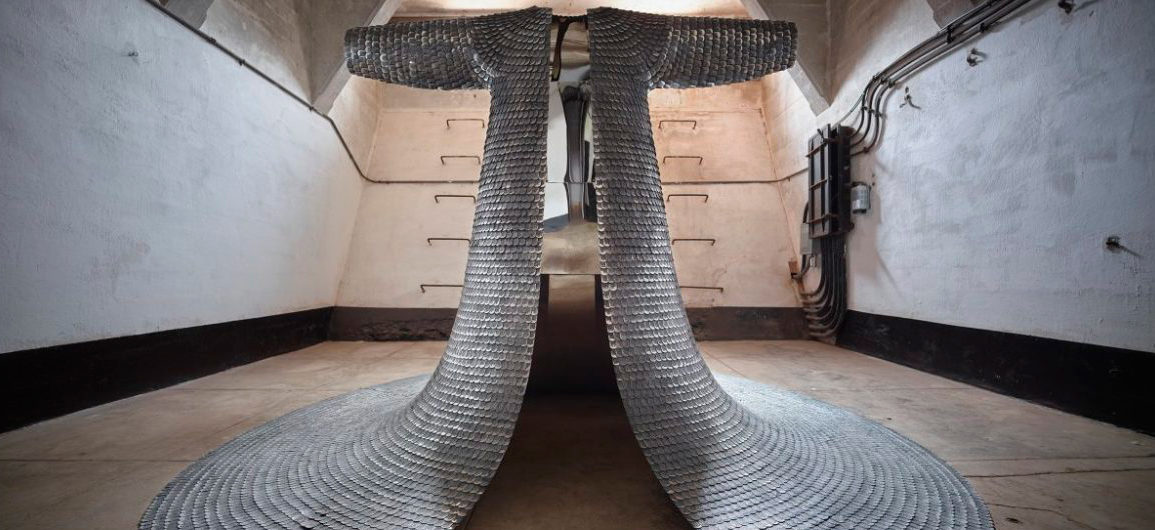The rhetoric around borders and security has been steadily on the rise prior and still going strong after the presidential elections. Why nations need protection? Why borders exist? Are borders only physical or psychological or both? How do we break stereotypes about what makes or breaks national or personal security? These are some of the questions the current exhibition HOME LAND SECURITY, occupying a number of former military structures in the Presidio district in San Francisco, is attempting to answer. It is organized and commissioned by FOR-SITE Foundation, established in 2013, with a sole mission to the create, understand, and present art about a particular place.
The exhibition catalogue explains its purpose: “[It] extends FOR-SITE’s focus on provocative art about place, inviting viewers into decommissioned batteries, an administrative building, and a chapel — some open to the public for the first time — that served for decades as key sites in the US Army’s Coastal Defense System. The 18 featured artists represent diverse points of origin — including China, Cuba, Iran, Israel, Mexico, Poland, South Africa, South Korea, Syria, the United States, and Vietnam — underscoring the universality of themes of home, safety, and defense in an increasingly pervasive climate of fear and distrust.”
[metaslider id=39260]
Among many, one of the most moving pieces is Veterans’ Flame by Polish born artist Krzysztof Wodiczko. Driven by the need to bring the world closer to the pain suffered by the veterans, Wodiczko hopes the outcome of such experience would be the reduction of such artistic works in the future. His art is “a memorial to the trauma the veterans have suffered and to their comrades who did not survive. The art creates a safe space where voices that might otherwise be marginalized or stifled can be heard — where veterans can hear themselves, and begin to heal.”
[metaslider id=39265]
Healing is a central, albeit unofficial, theme of the exhibition showing up across a number of unexpected works including act of purification in French born Yashar Azar Emdadian body shaving ritual, solemn drifting suitcase in the open water by Iranian artist Mandana Moghaddam, and groundbreaking portraits by South African artist Alexia Webster, where conflict-torn refugees begin to reclaim their dignity and pride. “Whether in war or security, poverty or wealth, a family photograph is a precious object. It affirms our identity and worth, and our place in humanity,” Webster explains.
It is a fact that borders are cruel. They break families apart, cut off communications, divide cultures and nations, and have produced more problems than solutions for many. This moving, at times painfully dramatic, exhibition doesn’t shy away from the seriousness of the subject matter. From war to travel, from immigration to assimilation, Home Land Security is another poignant reminder to all of us how have bordered-up our lives have become and the suffering it has caused throughout the world.
Authored by Stephan Rabimov, Director of Fashion Journalism & Social Media Center.



